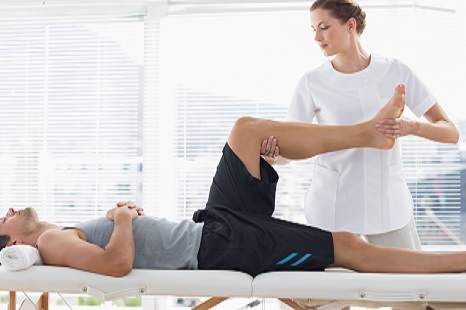Active assisted range of motion (AAROM)
When referring to physical therapists, they use many forms of manual therapy
in their assessment and treatment. These techniques may include:
A client moves a joint through their available range of motion while the therapist gives
assistance to achieve as much range as possible
Passive range of motion (PROM): a therapist moves a client’s joint through the available range of motion with no
assistance from the client
Passive stretching: a therapist places a muscle in a lengthened position and provides a static sustained hold for
a duration of time
Soft tissue massage: manipulation of the soft tissue (muscles, tendons, ligaments or fascia) through direct
physical contact (e.g. hands, forearm, elbow). Therapist will use different pressures and depths to act on the
soft tissue
Manual traction: providing a distraction force on a joint to allow for decompression or gapping to occur in the
joint space
Joint mobilizations: specific passive movements working directly on the movement at joint surfaces through
different velocities and amplitudes
Instrument assisted soft tissue mobilization (IASTM): use of specific tools to eliminate soft tissue and
myofascial restrictions
Trigger point release: trigger points are palpable nodules that create taut bands in the muscle. Trigger point
release is the act of applying pressure to these taut bands to ‘release’ or remove these nodules
Myofascial release technique (MRT): application of consistent pressure to restrictions in the myofascial tissue
Goals of Manual Therapy
Manual therapy techniques have a time and place in a physical therapist assessment and treatment. Based on the
presentation of symptoms and the outcome the physical therapist is looking to achieve, they may use one or
multiple forms of manual therapy. When applying these techniques, physical therapists are looking to achieve one
or more of the following outcomes:
Decrease and/or manage pain
Increase the range of motion at a joint
Promote relaxation
Improve tissue extensibility
Reduce inflammation of soft tissue
Mobilize a specific joint
Reduce movement restrictions
After a thorough assessment to understand a client’s condition, therapists will know which techniques need to be
employed to illicit one of more of these effects. The ultimate goal will be to improve a client’s function through
the use of manual therapy.
Effectiveness of Manual Therapy
There is a lot of controversy about the effectiveness of manual therapy in the literature. For every study that
shows the benefits of one form, there is another showing it has less of an effect than anticipated.
While there arre many benefits to manual therapy, it is not suited for every person or
condition. An effective physical therapist will use manual therapy techniques as a conjunct with education,
movement and exercise to promote healing and improved function in their clients.



.png)